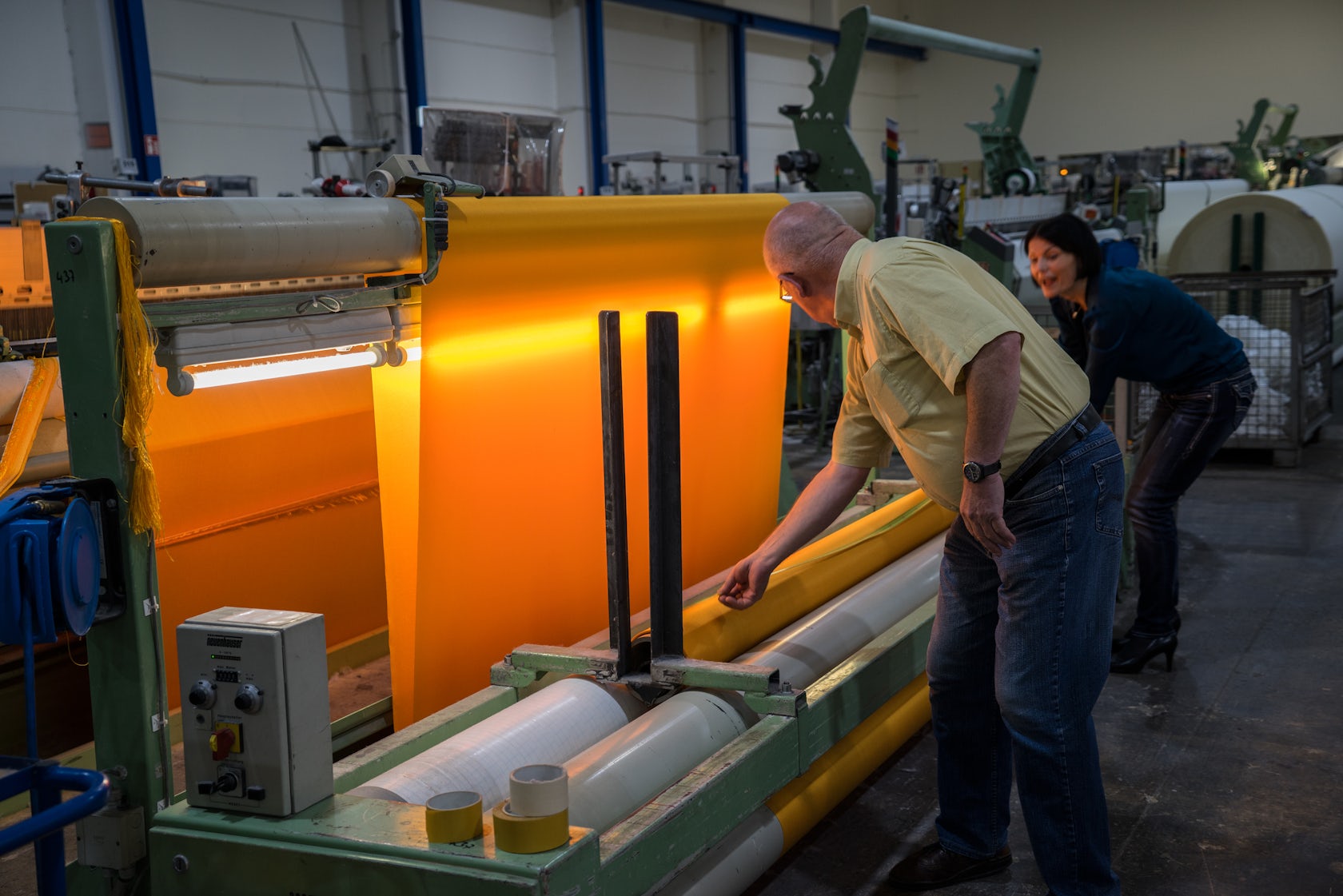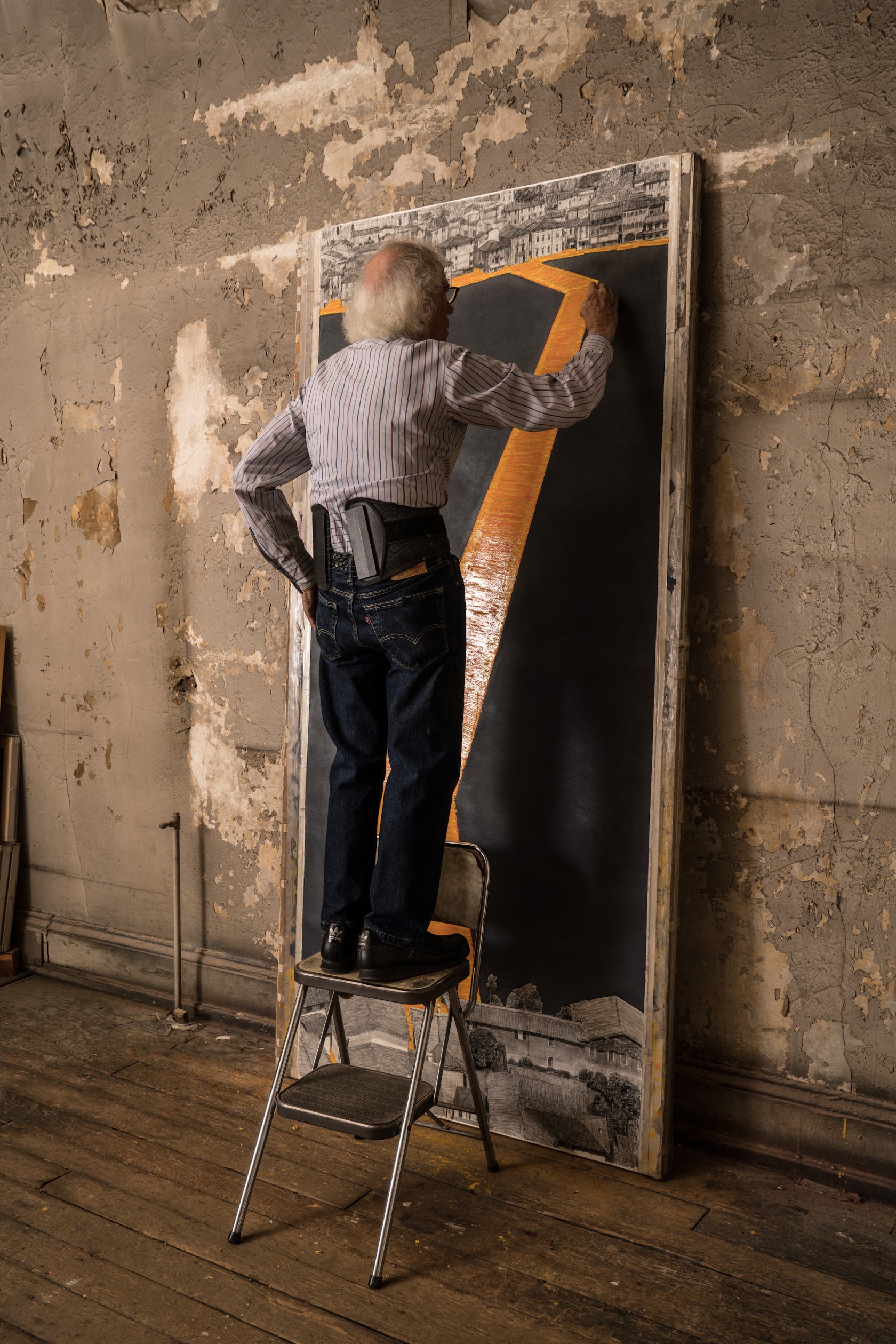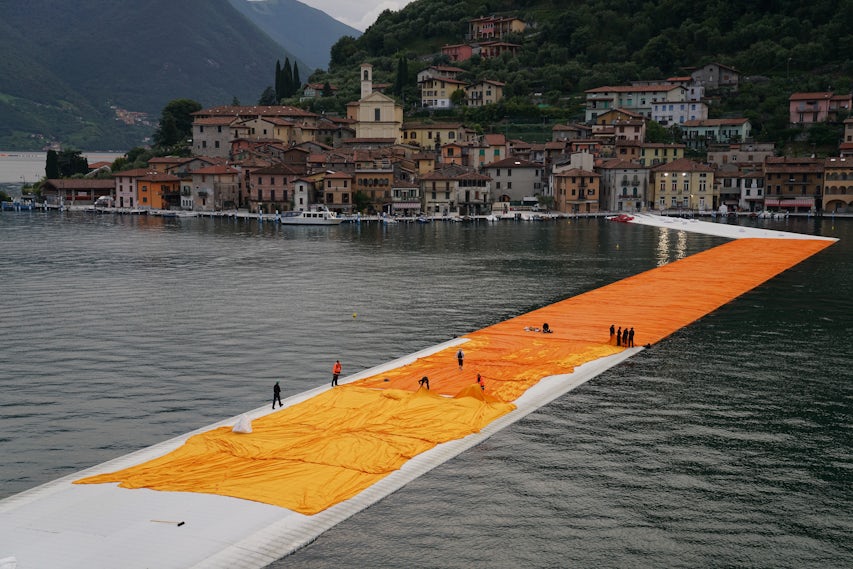Architects: Showcase your next project through Architizer and sign up for our inspirational newsletter.
“The project is the journey,” declares Christo, reflecting on the installation of The Floating Piers in a film directed by Italian duo Alessandro Cicoria and Carlo Lavagna. Capturing the artist amidst the windy Lake Iseo in Northern Italy, the directors listened to the story of this great installation — the first since The Gates in 2005 — and the passing of his wife and creative partner, Jeanne-Claude, in 2009.
Shimmering yellow fabric — 100,000 square meters (1,076,400 square feet) of it — stretched out over Lake Iseo and into the coastal villages of Sulzano and Monte Isola, connecting them to the island of San Paolo at the center of the body of water. Visitors were invited to walk atop those floating structures, smartly engineered by the artist and a team of European manufacturers, and the structure could be observed from various perspectives atop the mountains surrounding the lake.
Years after his renowned series of wrapped buildings, trees and other objects, Christo talks about the process of making public installations, which he funds solely through the sale of his personal artworks so that the public can freely enjoy and experience them.
According to Christo, his project’s journey sometimes lasts just a year, while in other cases it takes up to 25 years to develop an idea and make it complete. “I often say the software period and hardware period,” he explains. The software period refers to a point when the project doesn’t exist apart from drawings and sketches, while the hardware period is tied to “the physicality of the project,” the process of its realization and its ultimate presentation, to be experienced by the public.

Christo, The Floating Piers (Project for Lake Iseo, Italy); drawing, 2014, pencil, charcoal, pastel, wax crayon, enamel paint, hand-drawn map, cutout photographs by Wolfgang Volz, fabric sample and tape; photo: André Grossmann © 2014 Christo
The two periods represent different journeys that together create the whole of the work of art. Installations of the nature that Christo and Jeanne-Claude conceive of are not simply virtual or conceptual art projects, but rather “they are real things.” The artist values the process of research, manufacturing and proof-testing that culminates in the revelation of the work and its ultimate consumption by various audiences.

At the textile manufacturer Setex, 90,000 square meters (968,800 square feet)of shimmering yellow fabric are produced, Greven, Germany, August 2014; photo: Wolfgang Volz.
The project — which has now been disassembled — consisted of 220,000 high-density polyethylene cubes, keeping the docks afloat and giving visitors the unrecognizable feeling of walking on water “or perhaps the back of a whale,” suggests Christo. The three-kilometer walkway penetrated the narrow streets of Sulzano and Monte Isola, connecting the inhabitants of the towns to their lake and to the activity around the installation.

At the headquarters in Montecolino, construction workers assemble the piers, which were produced in 100-meter-long (330-foot-long) segments and stored outside Montecolino on Lake Iseo, January 2016; photo: Wolfgang Volz.
“They are projects that cannot be bought,” says Christo of the installations. They “cannot be owned, cannot be possessed,” he continues. The artists always cherished the ability to work in total freedom, creating projects that “are made for everybody [and] exist in this very precious time.”

Christo and Jeanne-Claude, The Floating Piers, Lake Iseo, Italy, 2014–16; photo: Wolfgang Volz © 2016 Christo
The installation lived within a moment of space and time over Lake Iseo as people visited the project, walked on it and experienced a new dimension of the region. After the fact, the glowing piers are remembered through countless documentation, drawings, films, photographs and accounts all around the world of those who visited and admired the artists’ work.

Christo in his studio working on a preparatory drawing for The Floating Piers, New York, November 2015; photo: Wolfgang Volz © 2015 Christo
The project was also a commemoration to Christo’s partner, Jeanne-Claude, with whom he initially conceived the idea of a floating installation in 1970. After Christo and his team — Operations Director Vladimir Yavachev, Project Manager and Official PhotographerWolfgang Volz, Registrar/Curator Josy Kraft and Project Director Germano Celant — scouted the lakes of Northern Italy in the spring and summer of 2014, they found an inspiring location and the manufacturing and building process started.
The installation lasted 16 days between June 18 and July 3 of 2016, and now that it has been taken down, all of its components will be industrially recycled.

During the life-size test at Montecolino, Christo is obviously delighted as the piers undulate with the movement of the waves, Lake Iseo, October 2015; photo: Wolfgang Volz.
For more information, you can visit the official website for The Floating Piers.
Architects: Showcase your next project through Architizer and sign up for our inspirational newsletter.
Cover image: From the evening of June 15 to the evening of June 17, teams unfurled 100,000 square meters (1,076,400 square feet) of shimmering dahlia-yellow fabric on the piers and pedestrian streets in Sulzano and Peschiera Maraglio; photo: Wolfgang Volz.









